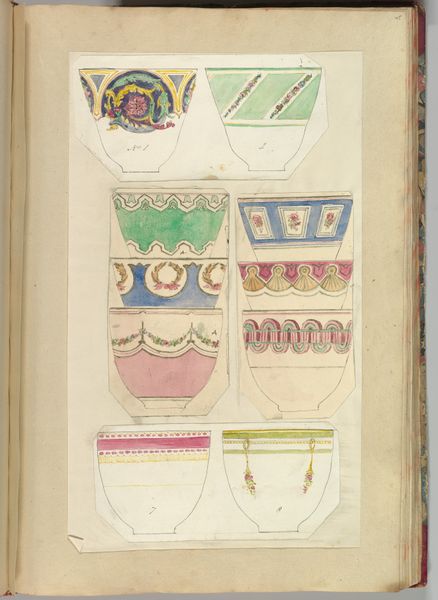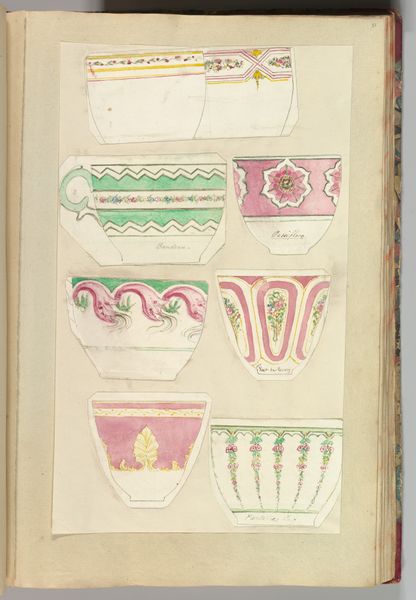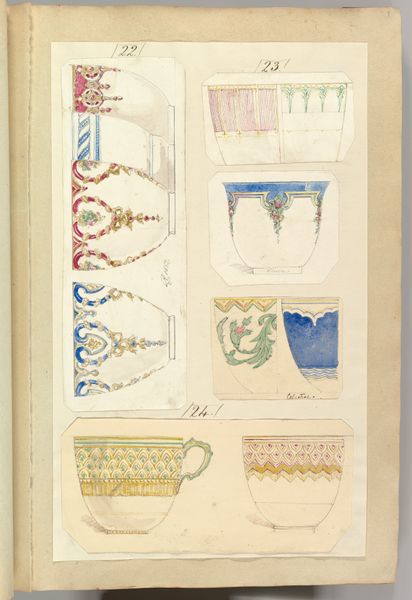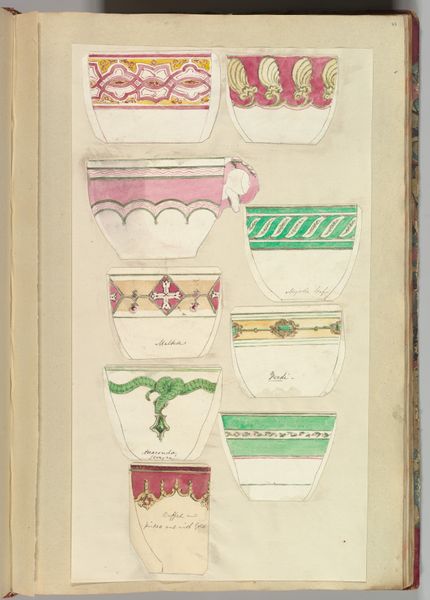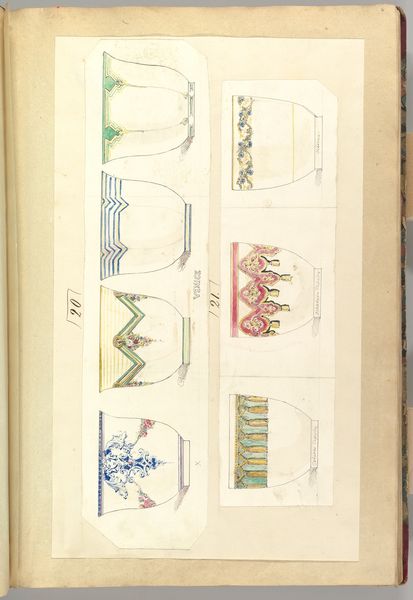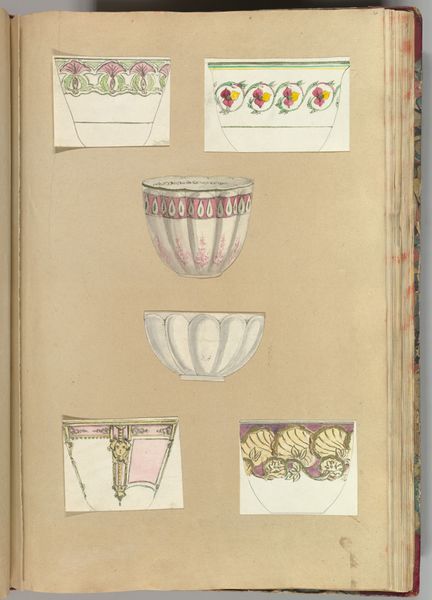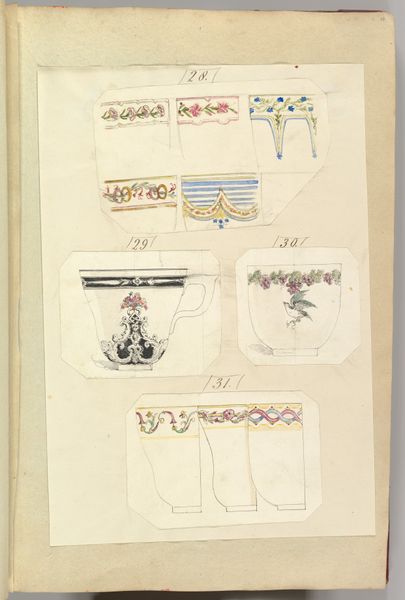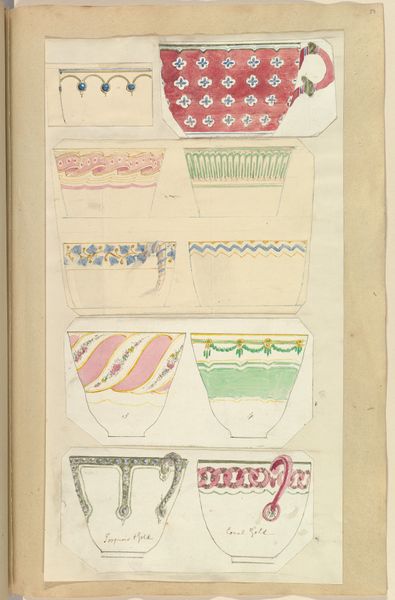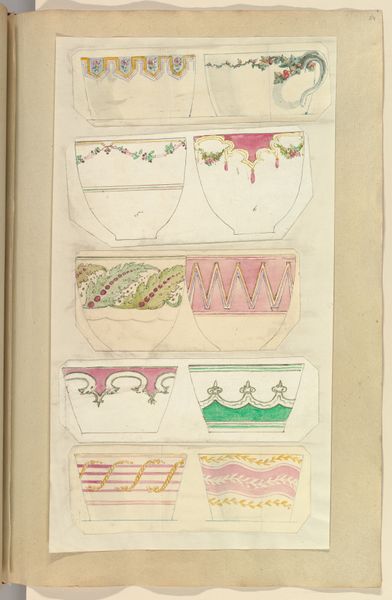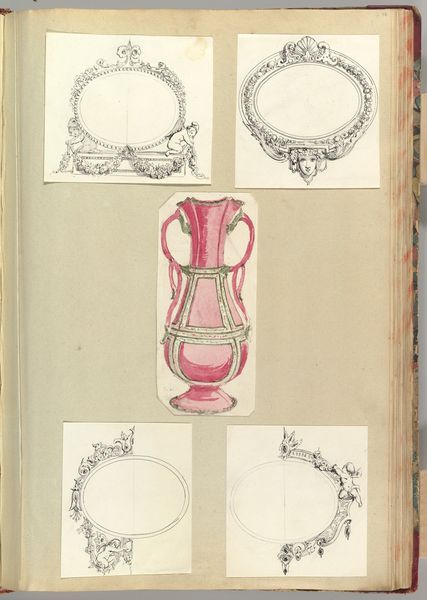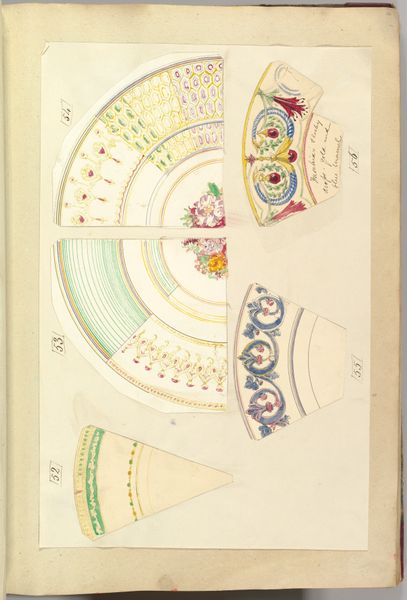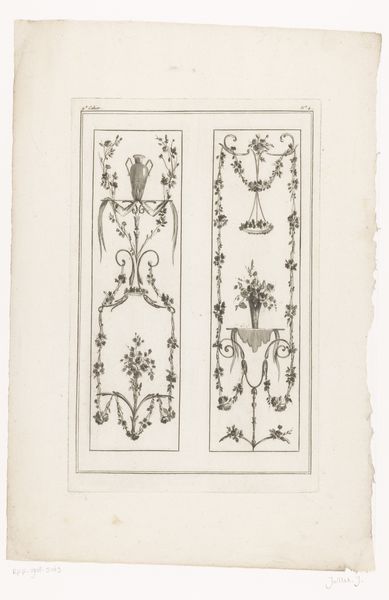
Five Designs for Decorated Cups and Three Designs for Saucers 1845 - 1855
0:00
0:00
drawing, coloured-pencil, print, watercolor
#
drawing
#
coloured-pencil
#
water colours
# print
#
watercolor
#
coloured pencil
#
decorative-art
Dimensions: sheet: 16 3/4 x 11 7/16 in. (42.5 x 29 cm)
Copyright: Public Domain
Curator: So, we’re looking at "Five Designs for Decorated Cups and Three Designs for Saucers" by Alfred Henry Forrester. It’s dated around 1845-1855 and done in watercolour and coloured pencil. It comes to us courtesy of the Metropolitan Museum. Editor: Oh, I see dainty! They're quite restrained, almost whispering "high tea". Not a riot of colour, but elegant, reserved... the kind of cups that would hold secrets well. Curator: Right. Forrester, best known as Alfred Crowquill, was an illustrator and caricaturist. Here we see the economics of design for industrial production during that time—each detail on those cups has implications for manufacturing and labor. How quickly can these designs be reproduced? What skills are required? Are they truly novel, or clever adaptations of prevailing motifs? Editor: See, that's where it gets fascinating! Because each cup hints at a little story, a personality. One is all zigzags of vibrant colour – it wants to party, whereas another sports delicate floral embellishments…perhaps designed to appease a quiet observer. They might even serve as a stage for little narratives when brought into use. Curator: The repetition and variation within these designs are intriguing. He isn’t reinventing the wheel, but optimizing design, thinking about things like transfer printing capabilities and market demand. Also notice the use of watercolor pencil! This highlights the material constraints. These designs aren't painted on the cups, but meticulously documented for manufacture! Editor: I hadn't considered that they aren't *on* the cups. Of course! They do have a dreamlike quality, suspended between potential and reality... What might those real-life cups have felt like in the hand? Would the designs warp on the curved surface? A little like dreaming about tea, instead of actually drinking it! Curator: Exactly. What appears 'whimsical' on the surface here represents, I think, serious considerations around material economies, skills and their value, and distribution. The decorative is not frivolous but central to capitalist production! Editor: Well, you've made me look at teacups and saucers as a form of subtle industrial poetry now. Curator: Good! Forrester gives us not just beautiful designs but a blueprint to consider material culture, both how we produce objects and, perhaps, also imagine their uses.
Comments
No comments
Be the first to comment and join the conversation on the ultimate creative platform.

